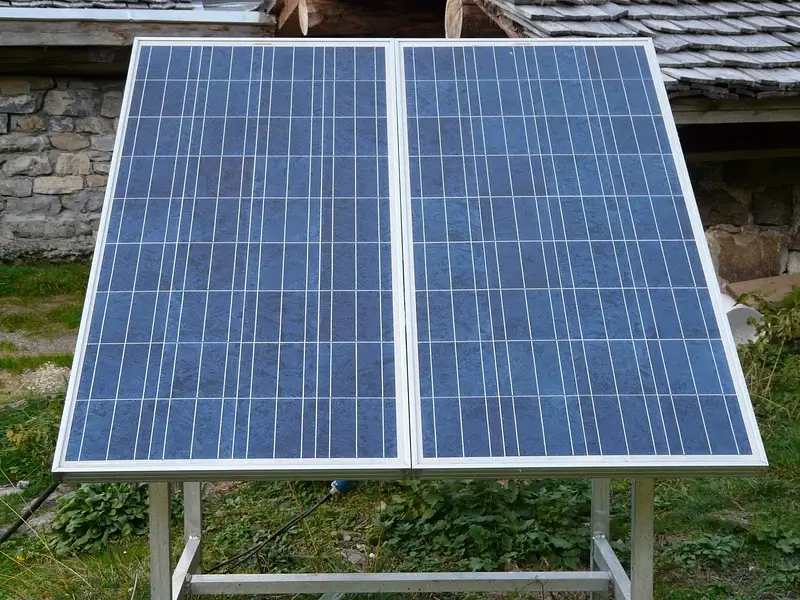
Are Free Solar Panel Programs Legit? What You Should Know in 2025
With solar energy gaining popularity—powering over 7% of U.S. homes in 2025—ads for “free solar panels” are everywhere, promising solar energy savings with no upfront cost. But are these programs legitimate, or are they too good to be true? While some low-income solar programs offer genuine support, many “free solar panel” offers are misleading marketing tactics or outright scams. With the 30% Federal Solar Tax Credit expiring for residential installations on December 31, 2025, understanding the legitimacy of these programs is crucial.
This guide explores the reality of free solar panel programs, highlights red flags to avoid scams, and details legitimate options like government-funded initiatives and financing. Learn how to protect yourself and maximize savings on residential solar panels. For personalized quotes, visit EnergySage to compare trusted installers.
What Are “Free Solar Panel Programs”?
The term “free solar panels” often refers to one of three scenarios, but none are truly “free” in the sense of zero cost:
- Solar Leases or Power Purchase Agreements (PPAs):
- What They Are: A solar company installs panels on your roof at no upfront cost. In a lease, you pay a fixed monthly fee (e.g., $50–$150). In a PPA, you pay for the electricity generated at a set rate (e.g., $0.10–$0.20/kWh), often lower than utility rates.
- Catch: You don’t own the panels, so you miss out on the Federal Solar Tax Credit (30% of installation costs) and other incentives. Contracts last 10–25 years, and payments may increase with escalator clauses tied to inflation. If you sell your home, the new owner must assume the contract, which can complicate sales.
- Legitimacy: Legitimate from reputable companies like Sunrun, but not truly free due to long-term payments. Best for those who can’t afford upfront costs or don’t qualify for loans.
- Low-Income Solar Programs:
- What They Are: Government or nonprofit programs, like the EPA’s Solar for All or California’s DAC-SASH, provide free or subsidized solar installations for low-income households (e.g., income below 60–80% of area median income). These programs aim to reduce energy costs, which account for 8.6% of low-income household income vs. 3% for others.
- Catch: Limited availability, strict eligibility (e.g., income, location), and long waitlists. Programs like Solar for All (launching late 2025 in some states) may not be available everywhere.
- Legitimacy: Legitimate when offered by .gov agencies or nonprofits like GRID Alternatives. Always verify via official sources like DSIRE.
- Solar Scams:
- What They Are: Fraudulent offers claiming “government-funded free solar panels” to collect personal data or push unfavorable contracts. Common tactics include door-to-door sales, social media ads (e.g., YouTube, Facebook), or fake .com websites mimicking .gov domains.
- Catch: These scams may lead to identity theft, high-pressure sales, or contracts with hidden fees. The U.S. Department of Energy confirms no federal program offers free solar panels to all homeowners.
- Legitimacy: Not legitimate. Avoid unsolicited offers and verify claims through official channels.
Are Free Solar Panel Programs Legit?
The legitimacy of free solar panel programs depends on the source:
- Legitimate Programs:
- Government/Nonprofit Programs: Programs like Solar for All ($7 billion EPA initiative for 900,000 low-income households) and California’s Low-Income Weatherization Program (LIWP) are legitimate but limited to qualifying low-income households. For example, LIWP requires California residency and income below 60% of state median. New York’s Solar for All offers community solar with $5–$15 monthly bill credits for eligible renters and homeowners, with no upfront costs.
- Solar Leases/PPAs: Offered by reputable companies like Sunrun, these are legitimate but involve long-term payments. They’re not free, as you pay for electricity or lease fees, and you miss out on tax credits.
- Verification Tips: Check for .gov websites (e.g., www.energy.gov), contact state agencies, or verify installers through the North American Board of Certified Energy Practitioners (NABCEP).
- Illegitimate Programs:
- Ads claiming “free solar panels from the government” are often scams, especially on social media or via door-to-door sales. A 2023 PolitiFact investigation found a Facebook ad falsely promising free panels under a “2023 Solar Incentive Program.”
- Red flags include high-pressure sales, requests for personal data without clear terms, or installers not listed on .gov program pages. The Better Business Bureau warns that “free solar panels” may disguise costly leases or scams.
How to Spot and Avoid Solar Panel Scams
To protect yourself from solar panel scams, follow these tips from the U.S. Department of Energy and consumer protection agencies:
- Be Skeptical of “Free” Claims: No federal program offers free solar panels to all homeowners. Legitimate programs target low-income households and require income verification. Avoid ads on YouTube or Facebook promising “free government solar.”
- Verify Program Legitimacy: Check for .gov websites (e.g., www.epa.gov for Solar for All) or contact state agencies. For example, North Carolina’s EnergizeNC (launching late 2025) warns against early offers claiming Solar for All benefits.
- Avoid Unsolicited Offers: Door-to-door salespeople or cold calls offering “free solar panels” are often scams. Reputable installers don’t use high-pressure tactics or ignore “no soliciting” signs.
- Get Multiple Quotes: Compare at least three quotes from NABCEP-certified installers via EnergySage. Legitimate low-income programs list approved vendors.
- Read Contracts Carefully: For leases/PPAs, check for escalator clauses (increasing payments) or transfer issues if selling your home. Never sign under pressure.
- Report Scams: Contact the Federal Trade Commission (FTC) or your state’s consumer protection agency if you suspect fraud.
Legitimate Ways to Reduce Solar Panel Costs in 2025
While truly free solar panels are rare, you can significantly lower solar panel costs through legitimate programs and financing:
- Federal Solar Tax Credit:
- Details: The 30% Residential Clean Energy Credit covers 30% of installation costs (e.g., $6,600 on a $22,000 system) for systems installed by December 31, 2025. File IRS Form 5695 with your taxes. The credit drops to 26% in 2033 and expires in 2035.
- Eligibility: You must own the system (not lease/PPA) and have sufficient tax liability. Nonrefundable but rolls over to future years.
- Savings: Reduces net cost to $12,701–$18,497 for a 7.2 kW system.
- Low-Income Solar Programs:
- Solar for All: This EPA program, funded with $7 billion, supports rooftop and community solar for low-income households in 50 states, launching late 2025 in some areas (e.g., EnergizeNC). Savings average 20% on bills ($5–$15/month).
- California DAC-SASH: Administered by GRID Alternatives, it provides free or subsidized solar for low-income households in disadvantaged communities, with $8.5 million annually through 2030.
- New York Solar for All: Offers community solar credits ($5–$15/month) for eligible renters and homeowners. Contact NYSERDA for details.
- How to Apply: Check DSIRE for state-specific programs and eligibility (e.g., income below 80% of area median, home ownership).
- State and Local Incentives:
- Examples include New York’s 25% tax credit (up to $5,000), California’s SGIP battery rebates ($150/kWh), or Massachusetts’ SMART program (incentive per kWh produced). Combining these with the federal tax credit can cover 50–70% of costs in some cases.
- Savings: Varies by state; check DSIRE for local rebates, tax exemptions, or net metering.
- Financing Options:
- Solar Loans: Zero-down loans let you own the system and claim tax credits, with payments often lower than utility bills ($100–$200/month). Interest (5.99–8%) increases costs to $26,000–$31,000 for a 7.2 kW system.
- Cash Purchase: Cheapest long-term ($2.52–$3.03/W), with paybacks of 4–10 years and lifetime savings of $31,000–$100,000.
- Leases/PPAs: No upfront cost but less savings due to missed incentives. Best for those ineligible for loans or tax credits.
Is Going Solar Worth It in 2025?
Solar energy systems are worth it for most households, with payback periods of 4–10 years and lifetime savings of $31,000–$100,000 over 25 years, per EnergySage. Benefits include:
- Savings: A 7.2 kW system saves $1,000–$4,000 annually, depending on state electricity rates ($0.11–$0.33/kWh).
- Home Value: Solar increases home value by 4–6.8% ($15,000–$30,000 for a $400,000 home).
- Environmental Impact: Cuts ~8,000 lbs of CO2 annually, equivalent to planting 120 trees.
- Incentives: The Federal Solar Tax Credit and state programs lower costs significantly, but only if you own the system.
However, “free solar panel” programs like leases/PPAs may not suit everyone:
- Missed Incentives: You forfeit tax credits and rebates, reducing savings.
- Long-Term Costs: Monthly payments over 10–25 years can exceed utility bill savings, especially with escalator clauses.
- Home Sales: Transferring lease/PPA contracts to new owners can complicate sales.
Low-income programs are ideal for eligible households but have limited availability. For most homeowners, buying or financing with a loan offers the best solar energy savings. Get quotes from trusted installers like Sunrun to compare options.
FAQs About Free Solar Panel Programs in 2025
Are there any truly free solar panel programs?
No federal program offers free solar panels to all homeowners. Low-income solar programs like Solar for All or California’s DAC-SASH provide free or subsidized systems for qualifying households (e.g., income below 80% of area median). Leases/PPAs are not free, as you pay monthly fees or for electricity.
How can I tell if a free solar panel offer is a scam?
Check for .gov websites, avoid unsolicited offers (e.g., door-to-door, social media ads), and verify installers through NABCEP or state program lists. Report suspicious offers to the FTC or your state’s consumer protection agency.
Can I claim the Federal Solar Tax Credit with a lease or PPA?
No, only system owners (via cash purchase or loan) can claim the 30% tax credit. With leases/PPAs, the solar company claims the credit, reducing your savings.
Which states offer low-income solar programs?
California (DAC-SASH, LIWP), New York (Solar for All), Illinois, Washington D.C., and Colorado offer programs. Check DSIRE for state-specific options launching in 2025.
How much can I save with solar panels?
A 7.2 kW system saves $1,000–$4,000 annually, depending on rates ($0.11–$0.33/kWh). Combined with the Federal Solar Tax Credit and state incentives, net costs drop to $12,701–$18,497, with paybacks in 4–10 years.
Conclusion: Navigate Free Solar Panel Programs Wisely in 2025
Free solar panel programs sound appealing, but most are either solar leases/PPAs with long-term costs or low-income solar programs with strict eligibility. Scams are common, especially on social media or through unsolicited sales, so always verify offers through .gov websites or trusted platforms like EnergySage. Legitimate options like the Federal Solar Tax Credit (expiring December 31, 2025) and programs like Solar for All can significantly reduce solar panel costs, but only for qualifying households or system owners.
To maximize solar energy savings, compare quotes from reputable installers like Sunrun and check state incentives on DSIRE. Act before the tax credit expires to save thousands and enjoy decades of lower energy bills with residential solar panels.
Disclaimer: Solar costs and program availability vary by state and installer. Consult a tax professional for Federal Solar Tax Credit advice and verify installer credentials before signing contracts. Always research programs to avoid scams.
